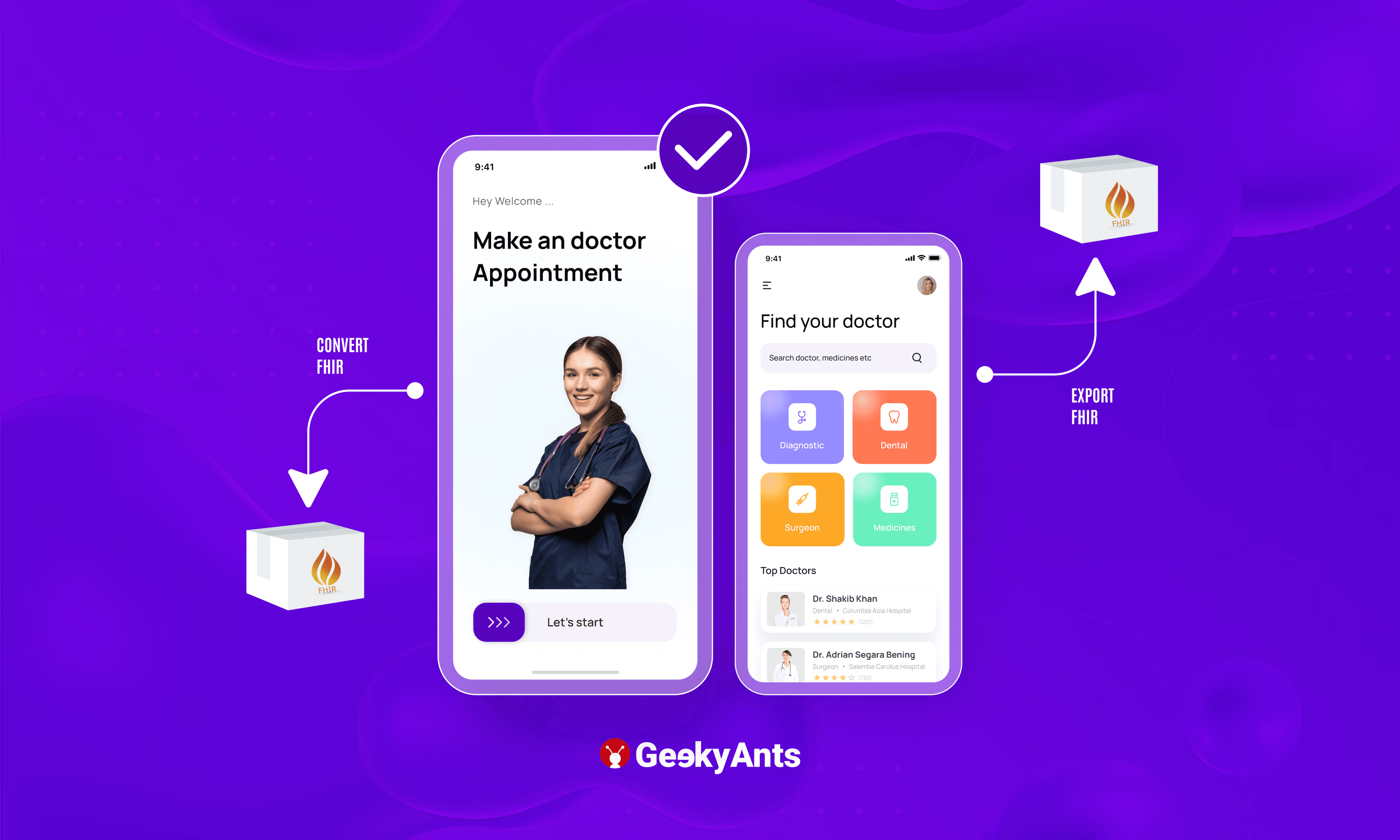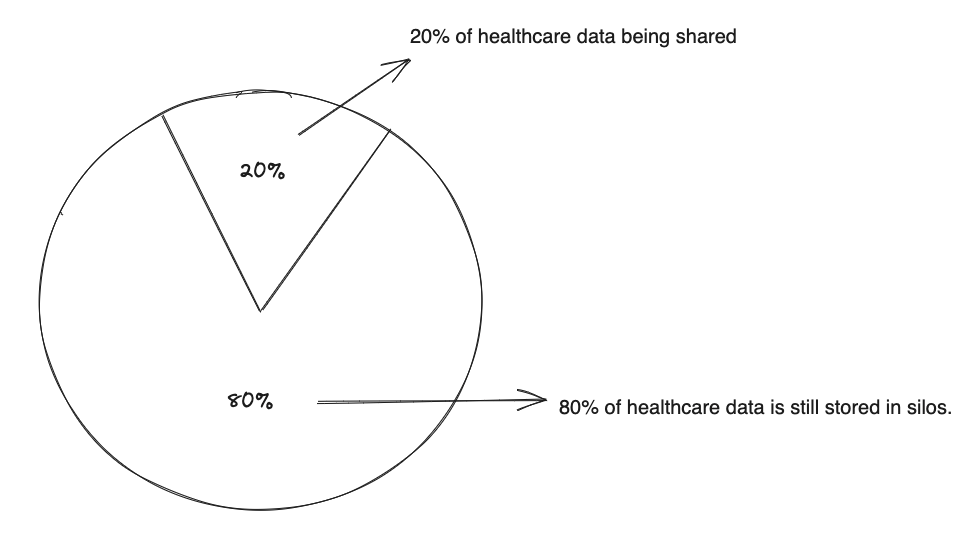Table of Contents
Interoperability and Data Exchange in Healthcare
Author

Date

Book a call
Interoperability: Connecting the Dots
Interoperability is like a bridge that connects different entities within the healthcare ecosystem. Imagine a scenario where multiple hospitals like Astor, Apollo, and Fortis need to collaborate to treat a critically ill patient. Traditionally, communication between them might involve lengthy processes and delays. However, with an interoperability system in place, this communication becomes seamless and efficient.
Think of it this way: Astor communicates with Apollo, Apollo communicates with Fortis, and the patient's data flows effortlessly, enabling doctors to make informed decisions promptly. Interoperability can save lives and significantly improve healthcare outcomes.
This concept extends beyond hospitals to other healthcare sectors, including insurance companies. Payers need to communicate with each other and with patients, and this communication becomes much more efficient with interoperability.
The Need for Standards: Enter FHIR and HL7

To implement interoperability effectively, standardized protocols are essential. This is where Fast Healthcare Interoperability Resources (FHIR) and Health Level Seven International (HL7) come into play. Having established standards allows secure and efficient data exchange between different entities in the healthcare domain.
Data Exchange: The Key to Streamlined Healthcare
Data exchange is a crucial aspect of modern healthcare. It reduces administrative burdens, empowers patients, and enhances care coordination. Consider a real-life scenario: a patient falls seriously ill in their hometown, far from their primary healthcare providers. Doctors in different locations need access to the patient's medical history and current treatments.
With data exchange enabled by interoperability, doctors can quickly access the patient's information and collaborate effectively, ensuring the best possible care. This real-time sharing of data can be a game-changer in critical situations.
Challenges in the Current Healthcare Landscape
Healthcare data is fragmented and stored across various entities such as hospitals, insurance companies, pharmacies, and diagnostic labs. When patients switch providers or insurers, their data may not easily transfer, leading to redundancy and increased costs.
Data fragmentation hinders optimal patient care, complicates transitions between healthcare providers, and inflates the cost of maintaining multiple data storage systems.
Exporting Data with Interoperability
One way to address these challenges is through data export using interoperability. Patients can seamlessly transition between providers and insurers by securely sharing data between different healthcare entities. This sharing not only improves patient experiences but also reduces costs.
To achieve data exchange via interoperability, healthcare organizations must establish a secure data transfer channel. This ensures that sensitive patient information remains confidential and protected.
Implementing Interoperability: A Technical Perspective
From a technical standpoint, implementing interoperability involves creating a Health Data Service Workspace in Azure Portal. This workspace serves as a centralized hub for managing healthcare data. Healthcare organizations can deploy FHIR services within this workspace, configure data inputs, and facilitate secure data exchange.
Converting Data for Seamless Integration
Another vital aspect of interoperability is converting data into standardized formats. Healthcare organizations receive data from various sources in diverse formats like ADT, CCD, and HL7. Converting this data into a uniform format ensures seamless integration into the healthcare ecosystem.
Organizations can leverage tools that use Liquid Engines to transform data into the desired format to achieve data conversion. These tools can convert data like CCD (Continuity of Care Document) into FHIR resources, making it accessible and understandable across the healthcare industry.
A Glimpse into the Technical Process
To illustrate the technical process, we can walk through the steps in Visual Studio Code:
| Steps | Description |
| 1. Create a Container Registry | Begin by creating an Azure Container Registry to store your healthcare data. |
| 2. Log In | Log in to the registry using the Azure Container Registry extension in Visual Studio Code. |
| 3. Pull Sample Templates | Use the command to pull sample templates that match the data format you want to convert (e.g., CCD, HL7, or JSON). |
| 4. Create a Workspace | Generate a workspace to work with your data and templates. |
| 5. Configure the Liquid Engine | You can configure Liquid Engines to transform data as needed within the workspace. |
| 6. Convert Data | Use the Liquid Engine to convert your healthcare data into a standardized format like FHIR. |
Empowering Healthcare with Interoperability
In conclusion, interoperability and data exchange have the potential to revolutionize healthcare. The healthcare industry can provide more efficient, cost-effective, and patient-centric care by breaking down data silos, improving communication between healthcare entities, and adhering to standardized formats like FHIR and HL7.
The technical tools and processes discussed here demonstrate that achieving interoperability is not only possible but also a significant step toward unlocking the full potential of healthcare data. As we move forward, embracing these principles and technologies will undoubtedly lead to a brighter and healthier future.
So, let's bridge the gap, connect the dots, and harness the power of interoperability to transform healthcare for the better.
Watch the full meetup here ⬇️
Dive deep into our research and insights. In our articles and blogs, we explore topics on design, how it relates to development, and impact of various trends to businesses.





